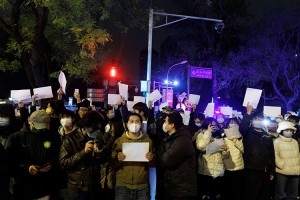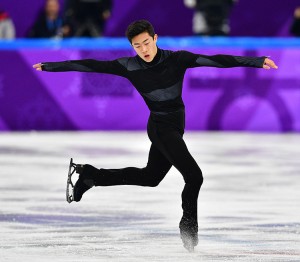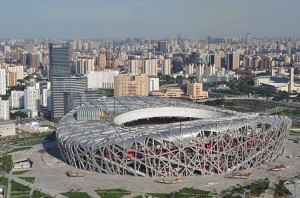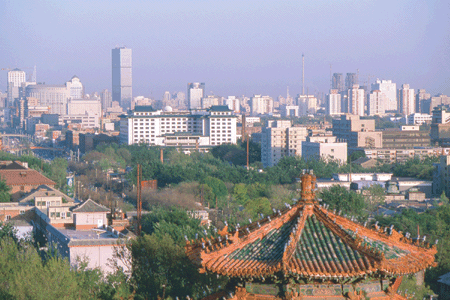China’s Zero-COVID Policy Protests
Thursday, December 15th, 2022
People hold white sheets of paper in protest over coronavirus disease (COVID-19) restrictions after a vigil for the victims of a fire in Urumqi, as outbreaks of COVID-19 continue, in Beijing, China, November 28, 2022.
Credit: © Thomas Peter, Reuters/Alamy Images
Back in 2020, when COVID-19 broke out, the world slowed down. Scientists and health experts figured out that masks, hand sanitizer, and social distancing decreased the chance of infection. However, staying home and testing also helped keep the cases down until vaccines were available. Some countries continued lockdowns and travel bans for longer than most of the world. China adopted a “zero-COVID” policy which required testing, hospitalization or isolation in facilities during infection and after exposure, and lockdowns that halted the country’s economy. While the strict policies did maintain a lower rate of infection compared to the United States and other countries, protesters have pointed out that the policy has harmed the economy and the general quality of life since businesses closed during lockdowns and access to food and healthcare was limited.
On Thursday, November 24th, a fire in an apartment building in Urumqi in China’s Xinjiang region killed 10 people and injured 9. The fire broke out on the 15th floor of the building and spread upward. When firefighters arrived, the stream of water from the fire hose could not reach the fire due to pandemic control barriers. Xinjiang had been under strict lockdowns to prevent the spread of COVID-19 for over three months before the fire. Many residents stayed in their apartments out of fear of breaking lockdown rules.
People began raising white papers at the vigils held to mourn those who died in the apartment fire. White is a symbol of death and mourning in Chinese culture. However, the papers soon became a symbol protesting China’s strict zero-COVID policy and censorship. The papers also cover faces, allowing protesters to hide from cameras. The white paper represents what the protesters would like to say if they were not afraid of the consequences of speaking out against the Chinese government. Some protesters have added messages on their papers to share their thoughts.
The last major demonstration in China was the Tiananmen Square protests of 1989. These protests broke out among university students demanding political and economic reform. The current protests began in Urumqi, where the fire occurred, and spread to cities and college campuses around China, including in Beijing, Guangzhou, and Shanghai. The protesters asked for an end to the strict zero-COVID policy keeping China locked down while the rest of the world copes with the virus. Some protesters demanded President of the People’s Republic of China Xi Jinping step down.
After intense protests throughout the country, China’s Communist Party lifted some zero-COVID policy regulations allowing people to resume daily activities on December 7th. Many people returned to work and dined at restaurants with their newfound freedom. However, many remained in voluntary lockdown in fear of contracting the virus. Health officials believe that cases will rise due to China’s low vaccination rate, the protests, and relaxed regulations. China is now reporting an average of 30,000 cases of COVID-19 a day, despite a decrease in testing.












